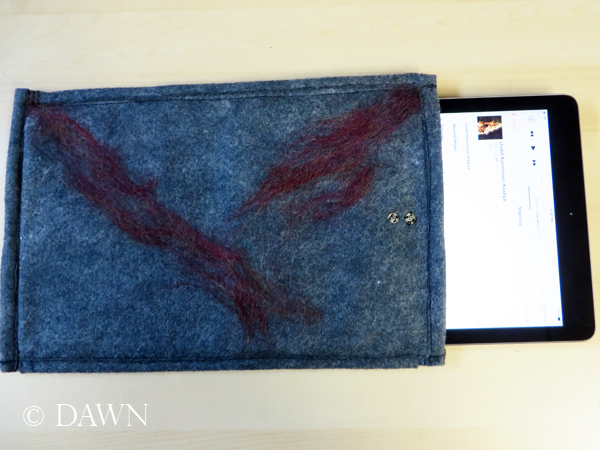While looking through a continuing education catalog (in the craft section) I was intrigued to take a Viking Knit (also called Trichinopoly Chain, Viking Weave, and Viking Chain) class. The class was over $100 though, and didn’t include all of the materials, so just on a whim I decided to look around online and see if there were other options.
A local bead store is also offering a class, (though they do ask students to purchase materials through them) for about ¼ of the cost, so I’m going to keep my eye on their calendar of events for the next one…
A bit of history
This kind of chain is actually “Viking” (Though the technique wasn’t exclusive to the Vikings, similar wire weaving has been found in Roman, Greek, and Byzantine sites as far back as the 1st century BCE.) as archaeological examples have been found in sites in Scandinavia and lands visited (raided, settled.. etc) by the Vikings and have been dated back to the 8th through 10th century. The Knit Smithy writes that ‘Viking Knit’ was used to make jewelry, trim clothing, and make other decorative objects. It was just one of many techniques used by the Vikings though, along with looped and forged wire chains and twisted wire (like that used to make neck or arm torques). The ‘stitch’ is similar to nalbinding – the viking knitting technique used for articles of clothing.
Jen Haley has also shared her research (which looks like something for the SCA) along with written (no photos) directions on how to create Viking Knit items. There is also a significant document on ISSUU by Lora-Lyne Stevens which… because of the formatting, I found really, really hard to read – and hence didn’t read all of it. 😦
Online resources (for crafting)
In the meantime, I took a look online for an idea of how to make Viking Knit. The best tutorial I found so far is on the Wildflower Designs blog: http://wildflowerdesignsnz.blogspot.ca/2011/10/viking-knit-tutorial.html
Additionally there is a good tutorial on ArtFire: http://www.artfire.com/ext/shop/blog_post/EntwinedVines/6437/how_to_make_viking_knit_pt_1 similar directions are on Fine Art by Rocio, http://www.fineartbyrocio.com/vikingknitdirections.html and Bracelets By Joy also has a three-part blog post about how to start, add beads while you ‘knit’ and finish off the chain (not including actual findings). The company that makes a special tool for Viking Knit (which isn’t necessary, but skips a step in the process by the looks of things) has posted a video on YouTube with fairly good visuals for those who learn better with a video than by pictures… http://youtu.be/Lr7tds7DDmc
Apparently the tools are pretty simple – a dowel, wire, tape, a nail, awl, or small crochet hook, a drawing board (a board with a bunch of various sized holes drilled in it), and then finishing items like caps, beads, etc for the finished piece.
Stay tuned…
Well, I finally got around to taking the class! In the next few days I’ll have some photos to share about the class and the project I made in the class!











